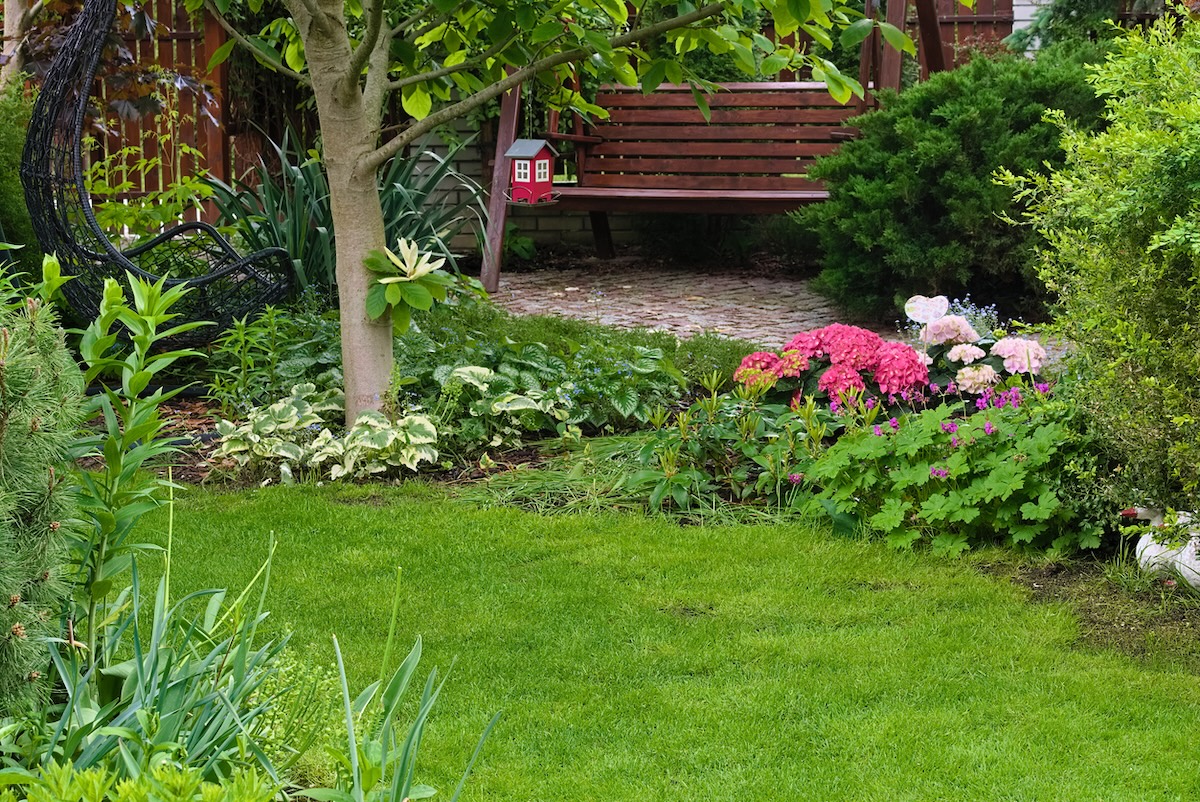

We may earn revenue from the products available on this page and participate in affiliate programs. Learn More ›
Although the best perennials for shade tend to be spring and early-summer bloomers, there are exceptions. This means it’s likely you’ll be able to keep even your most shadowy garden patch in flower for most of the year. And some shade plants have brightly colored foliage that can stand in for blooms if necessary.
This article won’t cover shrubs for shade, but instead herbaceous perennials. These plants usually die down to the ground during winter and resprout in spring. Keep in mind that most prefer humus-rich, well-draining soil, so the best garden fertilizer for them is likely to be organic fertilizer.
1. Bishop’s Hat (Epimedium spp.)
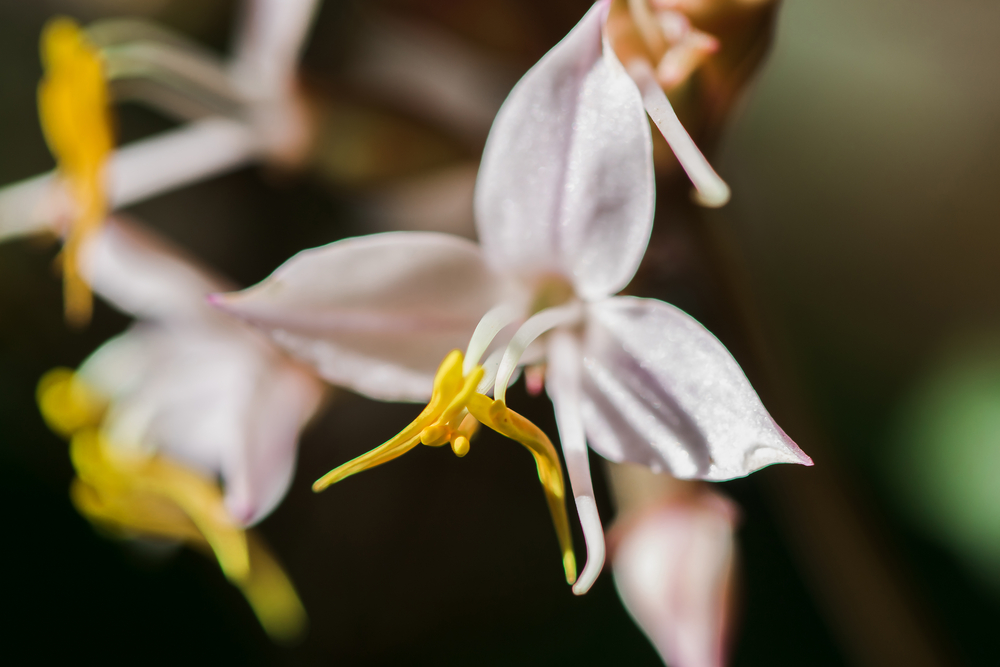
Like the more popular columbine, epimedium sports springy stems and spurred flowers in spring and early summer. However, this shade plant is low growing with heart-shaped foliage rather than columbine’s ferny type. Jenny Rose Carey, author of Glorious Shade, notes that “it will grow in dry shade under deciduous trees. I cut the foliage back to the ground in late winter to allow the spring flowers to shine—they are like little fairy hats.”
Hardiness Zones: Varies from 4 to 9
Mature Size: Varies from 6 to 20 inches
2. Bugloss (Brunnera macrophylla)
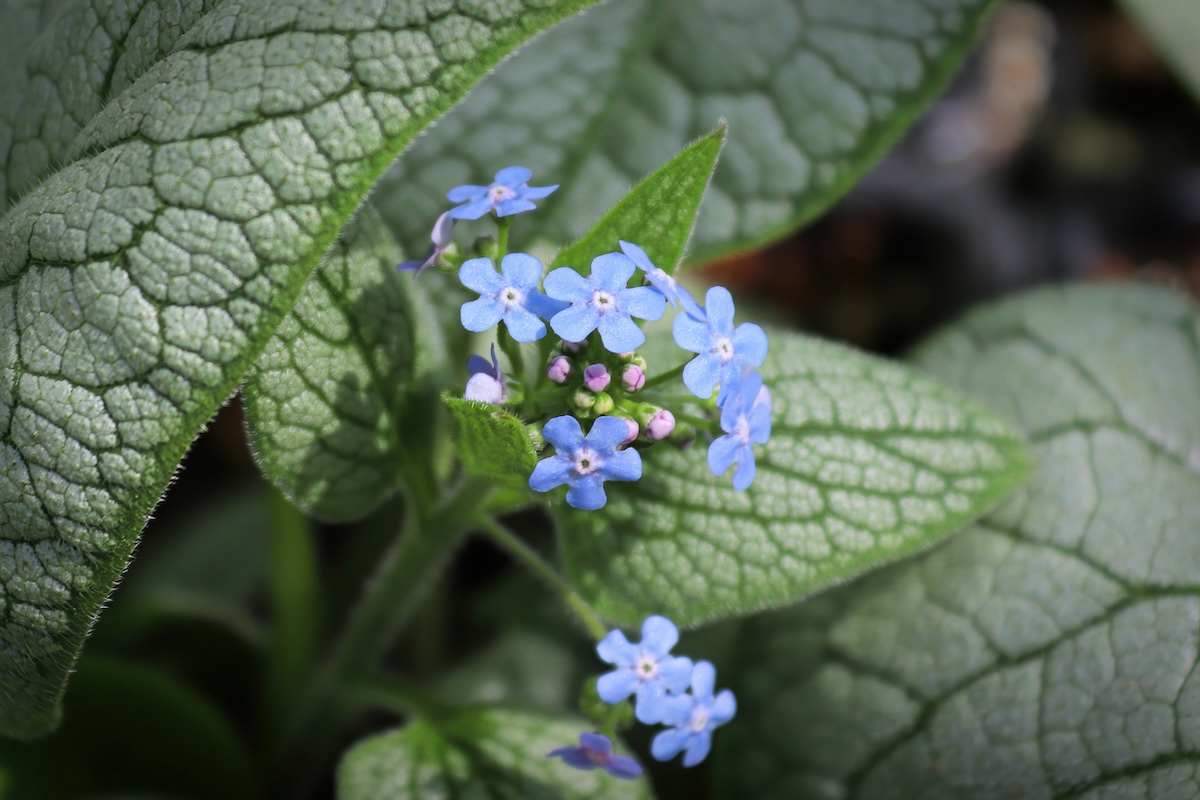
Usually grown for their variegated heart-shaped leaves rather than their blooms, brunneras produce panicles of small, blue forget-me-not-like flowers in spring and early summer. Their striking contrast to the frosty foliage stands out even in low light, though there also are green-foliage and white-flower types available. These perennials for shade generally grow no taller than 18 inches in partial or dappled shade. According to the Royal Horticultural Society (RHS), partial shade means 3 to 6 hours of sun per day.
Hardiness Zones: 3 to 9
Mature Size: 18 inches
3. Bleeding Heart (Dicentra spp.)
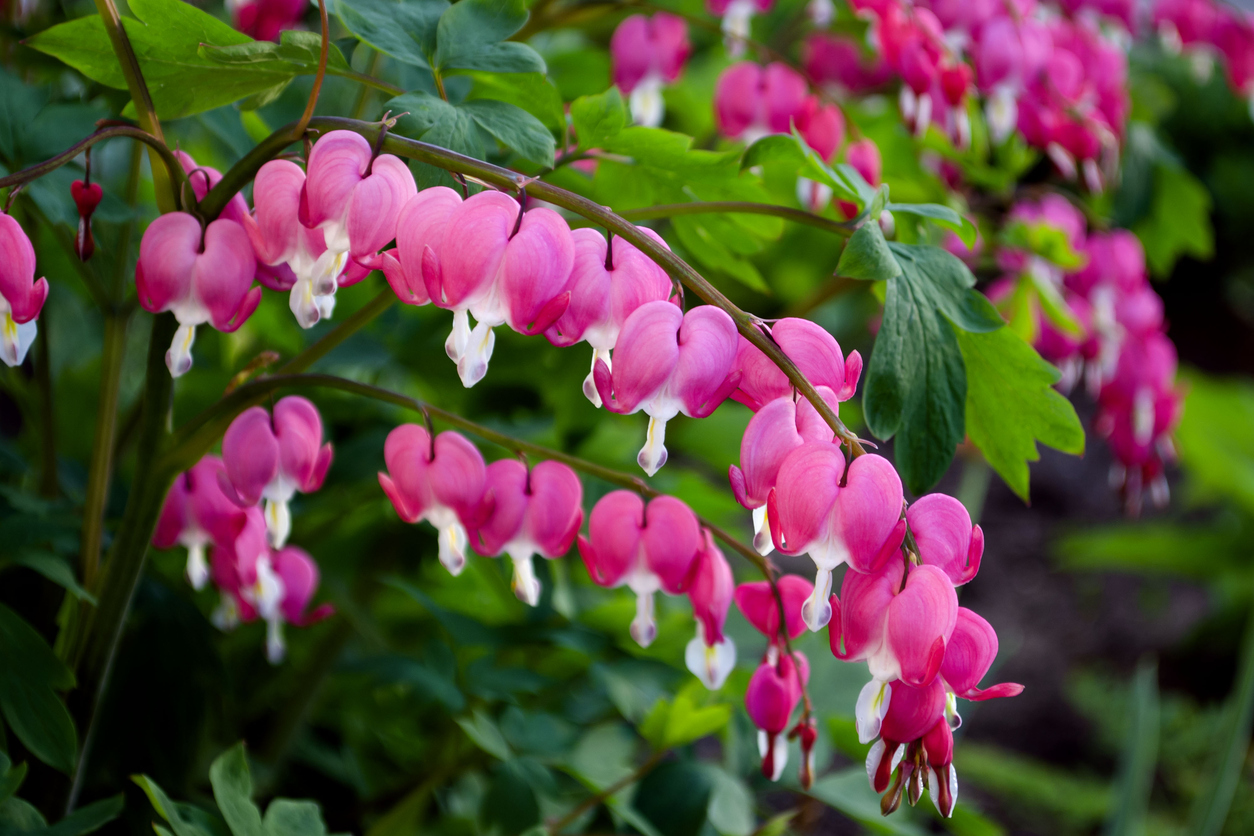
Among the most beloved flowers for shade, bleeding hearts vary from the arching fronds and panicles of pink and/or white heart-shaped blooms in Dicentra spectabilis to the climbing stems and tendrils of the scrambler Dicentra scandens with its blooms resembling the color of scrambled eggs. Some flower in mid-spring to early summer, after which they die back to the ground, while others continue heartening gardeners all summer. They prefer light shade and require winter cold to perform well.
Hardiness Zones: Varies from 2 to 9
Mature Size: Varies from 8 inches to 5 feet for freestanding plants, up to 3 or 4 feet for climbers
4. Columbine (Aquilegia spp.)
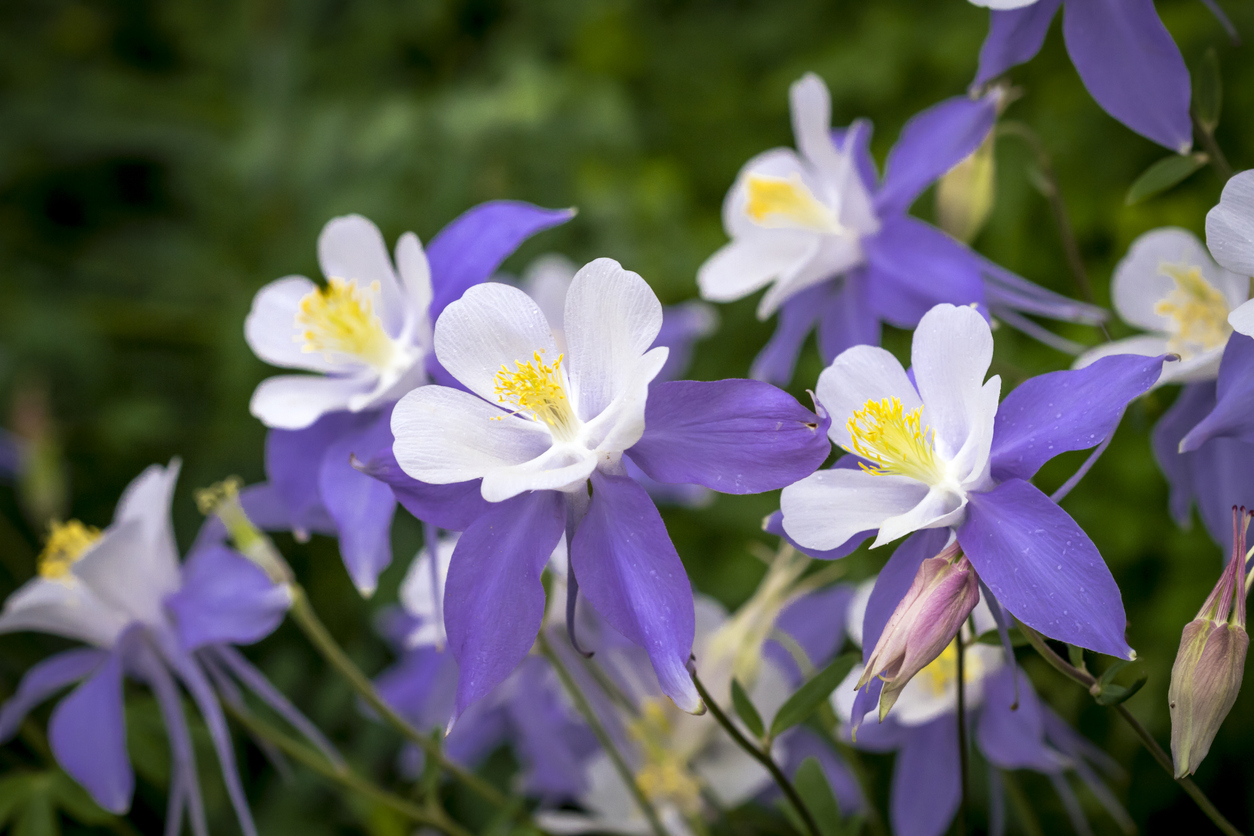
Among the most popular flowering plants for shade, columbines bob their “heads” like the doves for which they are named. Their spurred flowers in a wide variety of hues appear above ferny foliage in late spring and early summer. Although not long-lasting perennials—usually tiring and retiring after 3 or 4 years—they self-sow heavily enough to replace themselves. Preferring partial shade in southern climates, they can thrive in full sun in northern ones.
Hardiness Zones: Varies from 3 to 10
Mature Size: Varies from 18 inches to 3 feet
5. Coral Bells (Heuchera spp.)
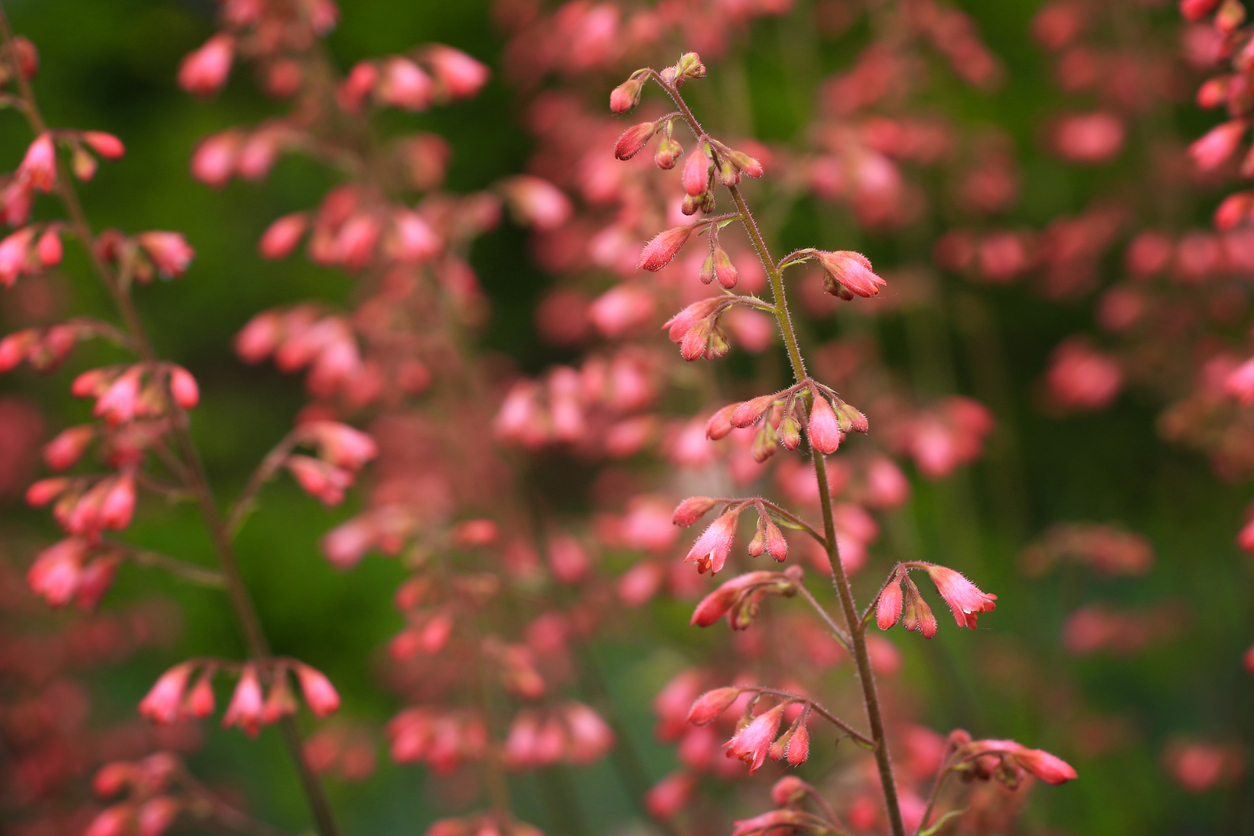
Although these low-light outdoor plants are named for their stalks of small bell-shaped flowers, they most often are raised for their richly hued foliage, which sports scrumptious colors from H. ‘Caramel’ and H. ‘Chocolate Ruffles’ to H. ‘Crème Brulée’ and H. ‘Peach Flambé’. Generally not growing taller than 18 inches with 1- to 3-foot flower stems, they are among the best container plants for partial shade or light shade.
Hardiness Zones: Varies from 3 to 10
Mature Size: 18 inches for plants, up to 3 feet for flower stems
6. Hardy Begonia (Begonia grandis)
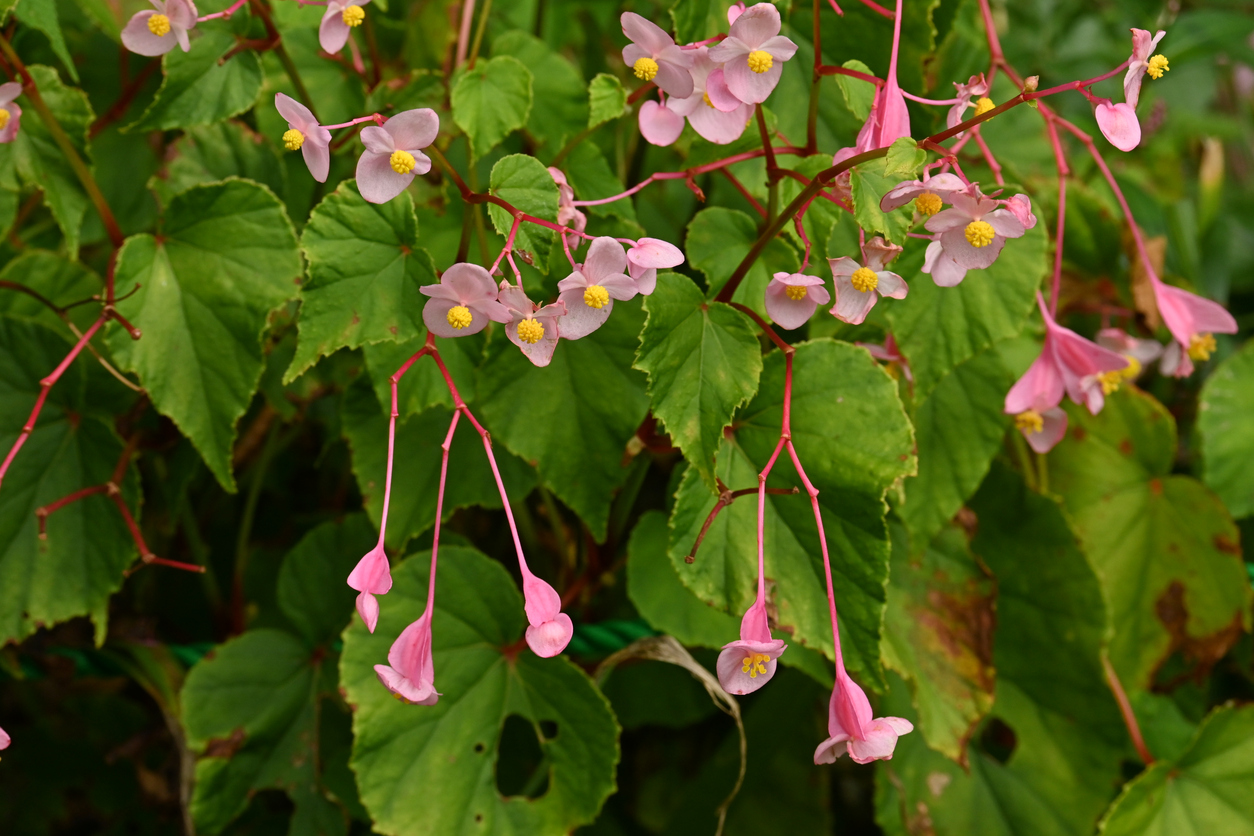
Though some assume that all begonias are annuals or houseplants, there is at least one exception. Numbering among the outdoor shade plants, some Begonia grandis cultivars can survive winters in Zones 5 through 9. Growing to 3 feet tall with red stems and roughly heart-shaped green leaves with red undersides, the plants produce clusters of 1-inch pink and white fragrant flowers during summer in partial to full shade.
Hardiness Zones: 5 to 9
Mature Size: Varies from 2 to 3 feet
7. Japanese Anemone (Eriocapitella x hybrida)
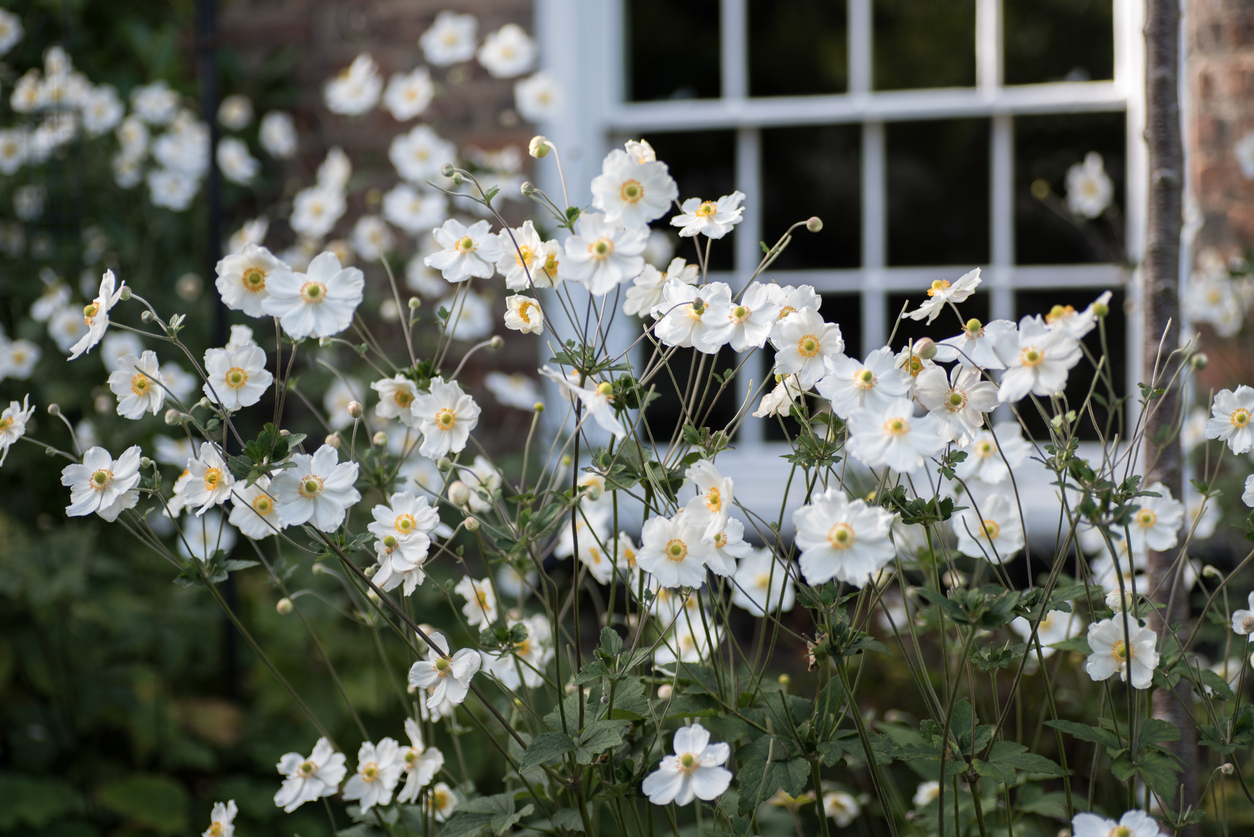
Although most species of anemones will survive and even thrive in less-than-sunny conditions, the Japanese type is particularly useful because it blooms from the end of summer into autumn, later than most other flowering perennials for shade. Growing from 2 to 4 feet tall with lobed foliage, the plants offer single or semi-double rose, pink, or white blooms 1 to 3 inches across. They prefer partial shade.
Hardiness Zones: 4 to 8
Mature Size: Varies from 2 to 4 feet
8. Hellebore (Helleborus spp.)
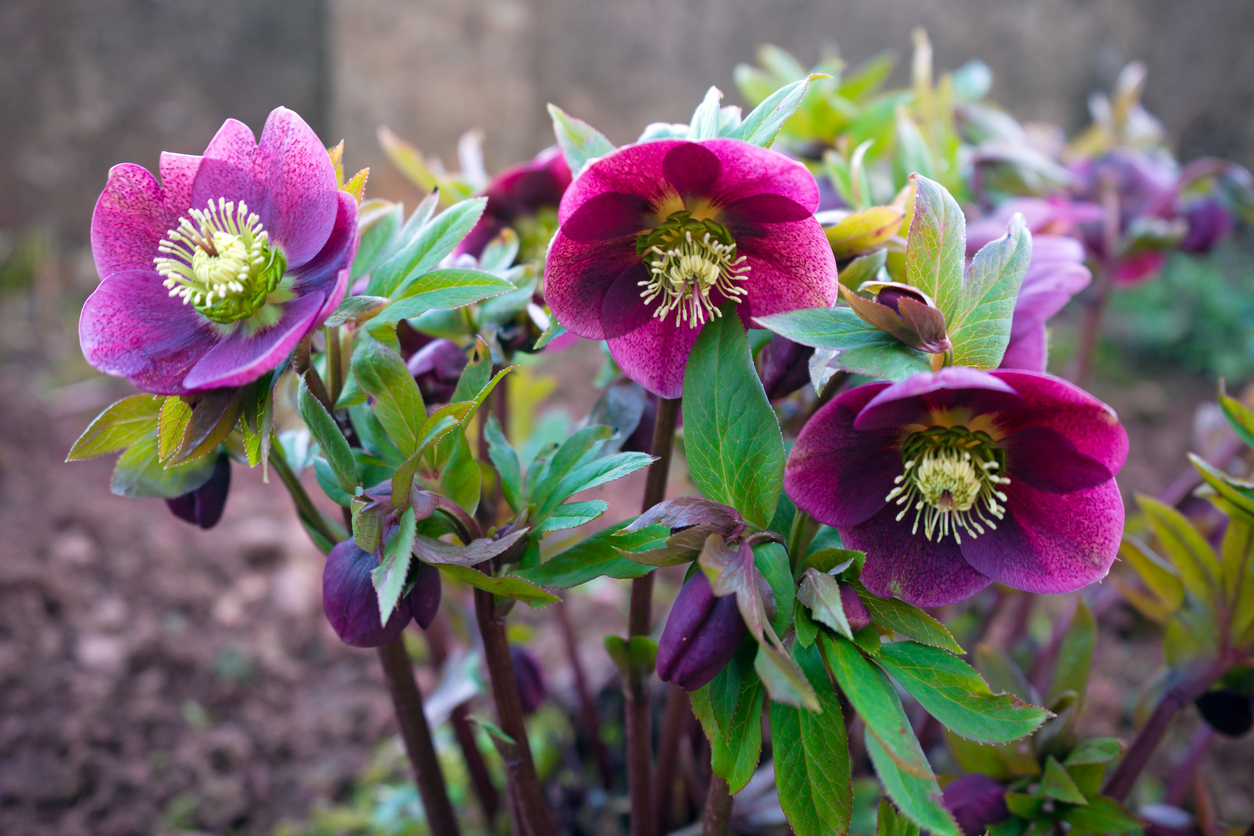
You might be able to enjoy winter blooms among your flowering perennials by growing hellebores. As its common name “Christmas rose” implies, Helleborus niger can bloom during the holiday season in the South. However, most Northern gardeners opt for the Lenten rose (H. orientalis) instead. Hellebore offers leathery foliage and single to double blooms in a wide range of colors. Keep in mind that it needs partial or high shade and is extremely toxic to people and pets.
Hardiness Zones: 3 to 10
Mature Size: 1 to 3 feet
9. Lily of the Valley (Convallaria majalis)
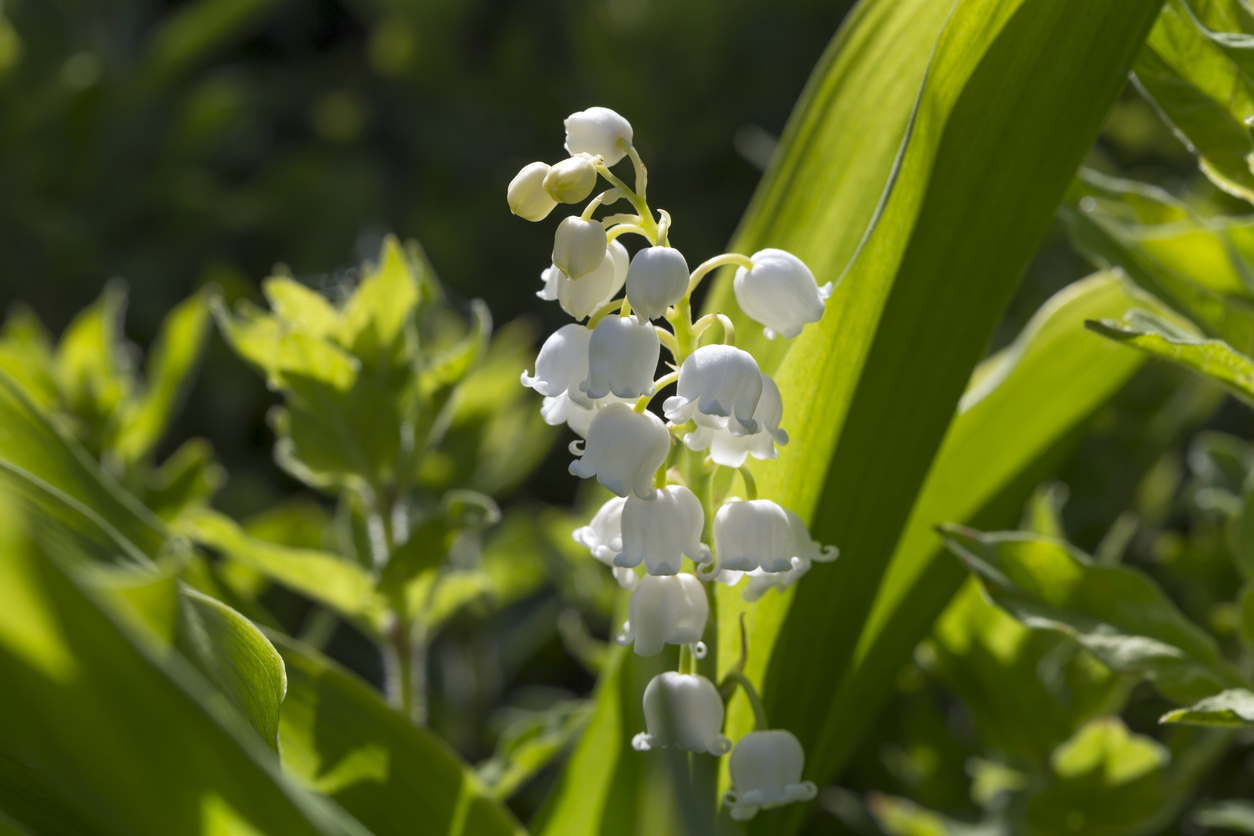
Among the low-maintenance perennials for shade, this diminutive plant grows to under a foot tall with upright glossy leaves that persist all summer. However, its blooms—tiny white, highly fragrant bells—appear only in late spring to early summer. Don’t be fooled by its delicate look, though. This lily can become invasive, and not just in valleys. Like hellebore, it is toxic and prefers high shade, such as shade from trees with limbs high above the ground.
Hardiness Zones: 3 to 9
Mature Size: 8 to 12 inches
10. Lungwort (Pulmonaria spp.)
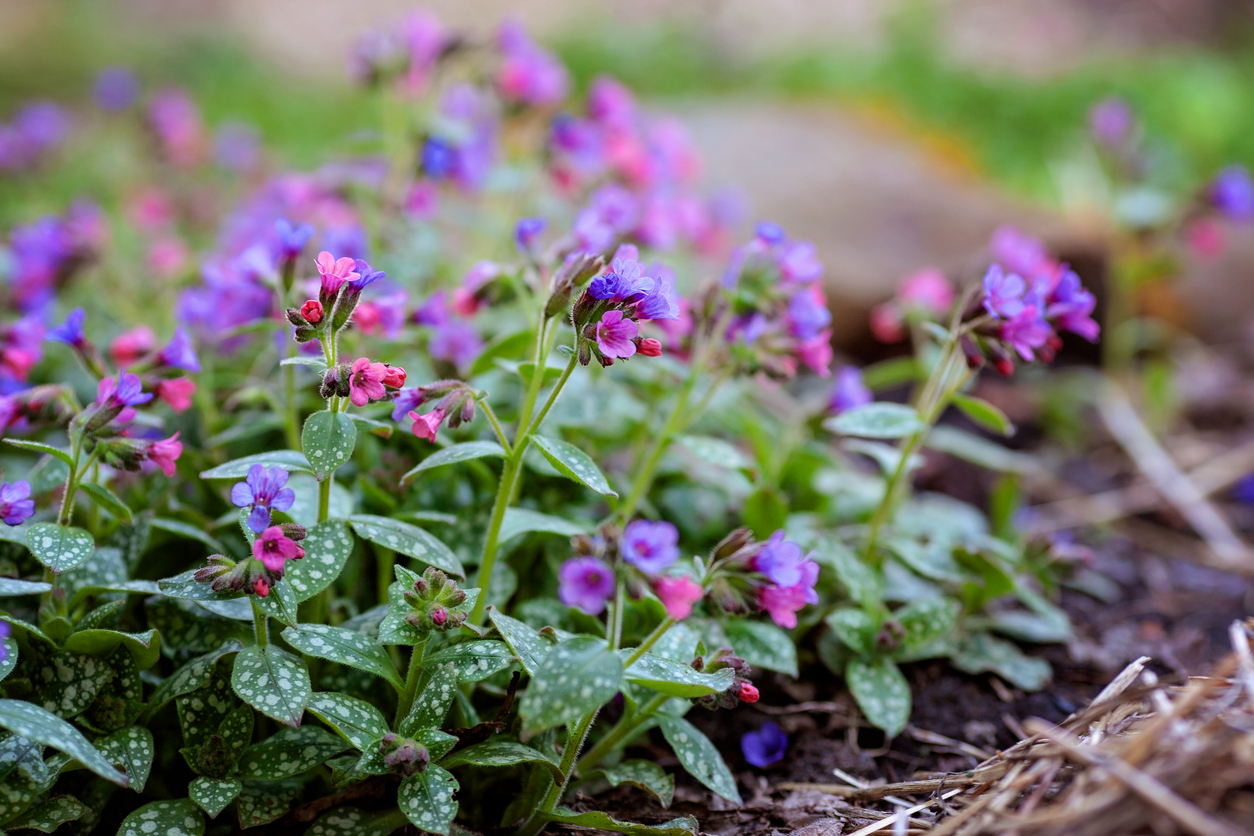
Lungworts’ green leaves, often spotted with silver, apparently resembled diseased lungs to the people who gave the plants their common name. However, that variegation allows these shade-flowering perennials to remain attractive after the early spring pink, white, or blue funnel-shaped blooms fade. Pulmonaria will grow in either light or full shade. According to the RHS, light shade means “a site that is open to the sky but screened from direct sunlight by an obstacle.”
Hardiness Zones: 3 to 9
Mature Size: 8 to 18 inches
11. Primrose (Primula spp.)
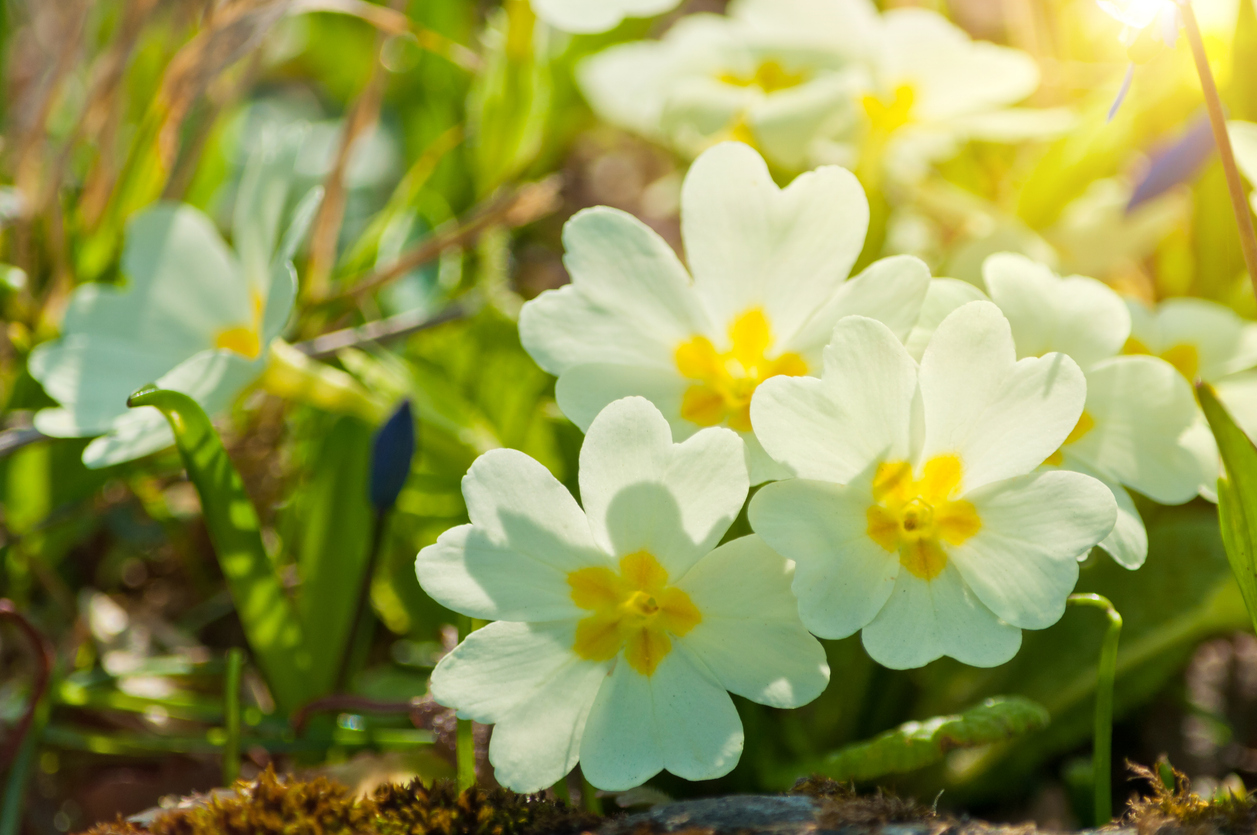
With their rosettes of green leaves and heads of round—often “eyed”—blooms, primroses remain among the most charming of the perennial flowers for shade. However, their preferences can vary widely. The Japanese variety (Primula japonica) will grow happily at the edges of streams, while alpine types such as P. auricula require soil with excellent drainage. Almost all prefer partial or dappled shade (sunlight filtered through overhanging tree leaves).
Hardiness Zones: 3 to 11
Mature Size: 3 inches to 36 inches
12. Wild Ginger (Asarum spp.)
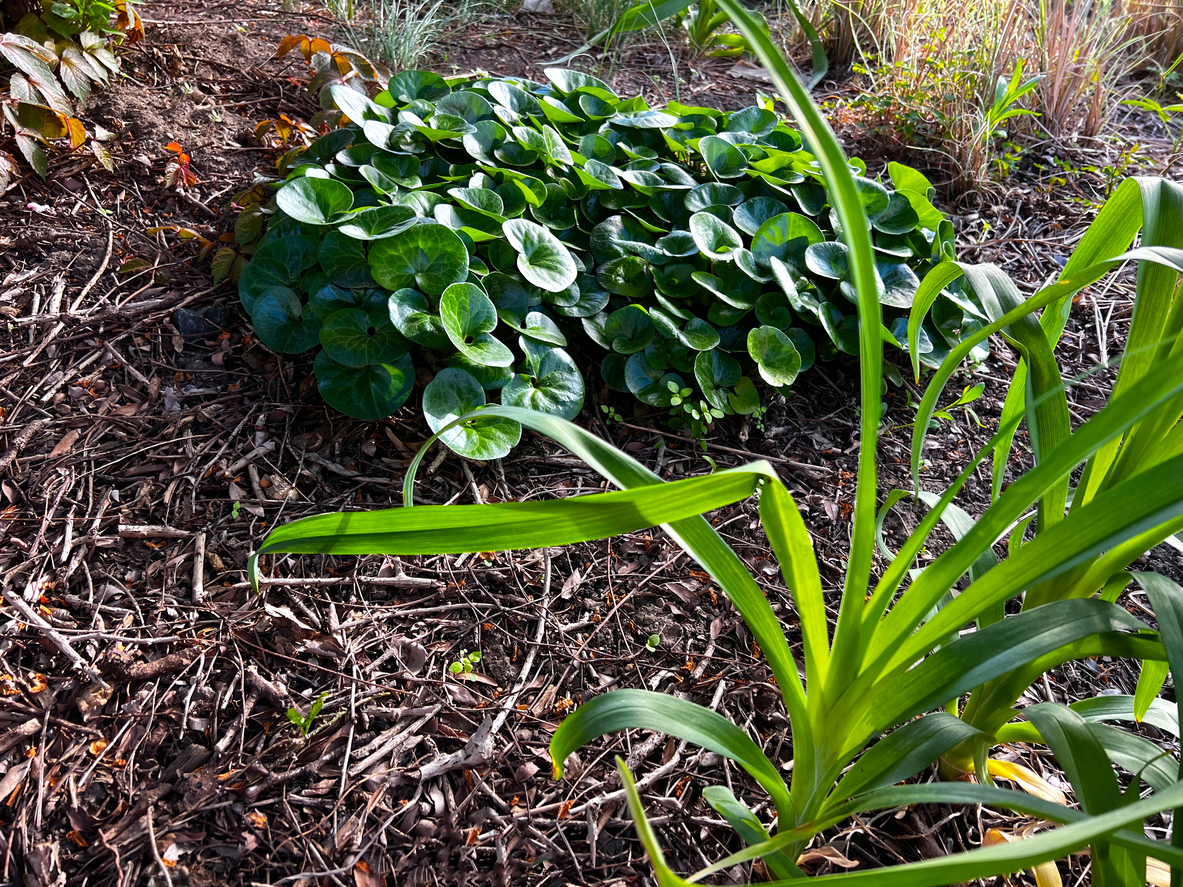
Many gardeners probably wouldn’t number wild gingers among the flowering perennials in shade, since their blooms are hard to see. Still, their glossy heart-shaped, sometimes silver-marked and spice-scented leaves make attractive ground covers where the sun doesn’t shine, and their unusual three-cornered brown or purple flowers appear just above ground level in spring to ginger up that season. They will tolerate either partial or full shade.
Hardiness Zones: 3 to 9
Mature Size: 6 to 10 inches
